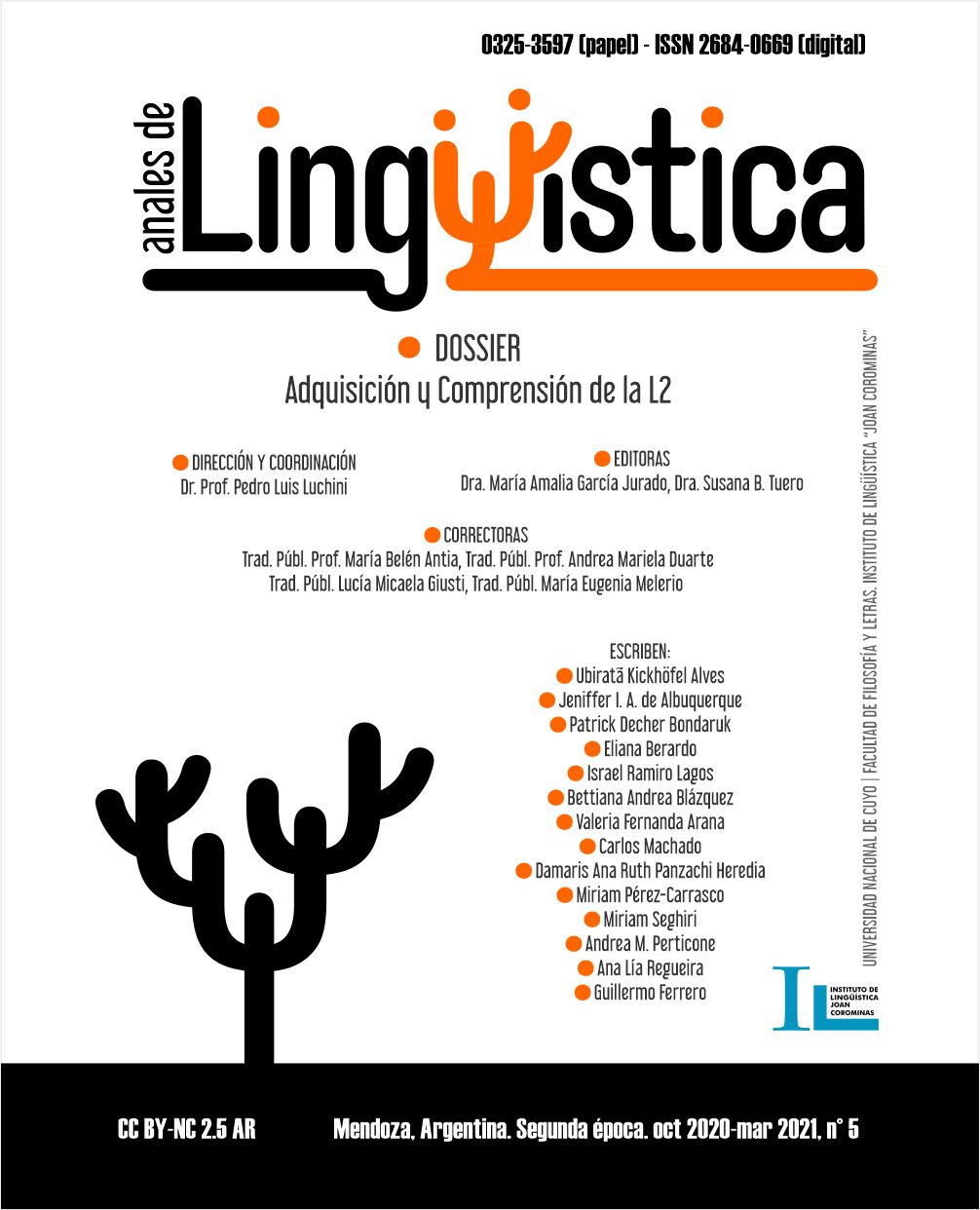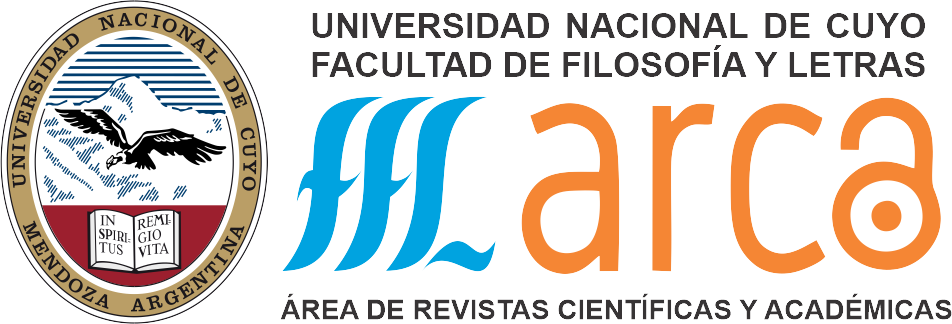L2 intelligibility and comprehensibility: trying out new measurements with AEPI
Keywords:
Intelligibility, comprehensibility, AEPI (Application), oral repetition task, time measurementAbstract
This paper presents and discusses new means of testing and measuring the constructs of ‘intelligibility’ and ‘comprehensibility’. Firstly, we present a short agenda of works which contributed with both theoretical and empirical insights on intelligibility and comprehensibility (Munro & Derwing 1995; Munro & Derwing 2001; Derwing & Munro 2015; Munro & Derwing 2015; Nagle, Trofimovich & Bergeron 2019; Albuquerque 2019). Afterwards, the AEPI application (developed by Bondaruk, Albuquerque and Alves 2018) is presented. AEPI is an open source tool that not only allows for a more traditional measuring (transcription task) but also introduces new variables to the studies on intelligibility and comprehensibility by providing an oral repetition task and response time measurements. Finally, AEPI’s use and contributions to some research studies are posed and discussed (Alves, Albuquerque & Brisolara 2019; Salves, Wanglon & Alves 2020; Albuquerque & Alves 2020).
References
Albuquerque, J. I. A. y Alves, U. K. (2020). Os construtos de ‘inteligibilidade’ e ‘compreensibilidade’ em dados do Português Brasileiro como língua adicional: um olhar via Sistemas Dinâmicos Complexos. Signótica, 32. Retrieved from https://www.revistas.ufg.br/sig/article/view/58214
Alves, U. K., Albuquerque, J. I. A. y Brisolara, L. B. (2019). Pensando ‘Inteligibilidade da Fala em Língua Adicional’ sob uma concepção dinâmica e complexa: primeiros passos em direção a um novo ensino de pronúncia. En: A. M. Sousa, R. Garcia y T. C. Santos (Eds.). Perspectivas para o Ensino de Línguas – volume 3 (pp. 34-47). São Carlos: Pedro & João Editores.
Beckner, C. et al. (2009). Language is a Complex Adaptive System – Position Paper. Language Learning, 59 (1), pp. 1-26.
Bondaruk, P., Albuquerque, J. y Alves, U. (2018). AEPI - Aplicativo para Estudos de Percepção e Inteligibilidade. Versão 0.01. Disponible en: aepi.e-pi.co
Cruz, N. C. y Pereira, M. de A. (2006). Pronúncia de aprendizes brasileiros de inglês e inteligibilidade: um estudo com dois grupos de ouvintes. Revista Virtual de Estudos da Linguagem, 4 (7), pp. 1-26.
De Bot, K. (2017). Complexity Theory and Dynamic Systems Theory: same or different? In L. Ortega y Z. Han (Eds.). Complexity Theory and Language Development: in celebration of Diane Larsen-Freeman (pp. 51-58). Amsterdam: John Benjamins Publishing.
Derwing, T. y Munro, M. (2015). Pronunciation Fundamentals: Evidence-based perspective for L2 Teaching and Research. Amsterdam: John Benjamins Publishing.
Kang, O., Thomson, R. y Moran, M. (2018). Empirical approaches to measuring the intelligibility of different varieties of English in predicting listeners comprehension. Language Learning, 68 (1), pp. 115-146.
Lindemann, S. y Subtirelu, N. (2013). Reliably biased: The role of listener expectation in the perception of second language speech. Language Learning, 63 (3), pp. 567-594.
Lowie, W. y Verspoor, M. (2015). Variability and variation in Second Language Acquisition orders: a dynamic reevaluation. Language Learning, 65 (1), pp. 63-88.
Lowie, W. y Verspoor, M. (2019). Individual Differences and the Ergodicity Problem. Language Learning, 69, pp. 184-206. doi:10.1111/lang.12324
Munro, M. J. y Derwing, T. (1995). Foreign accent, comprehensibility and intelligibility in the speech of second language learners. Language Learning, 45, pp. 73-97.
Munro, M. J. y Derwing, T. (2001). Modeling perceptions of the accentedness and comprehensibility of L2 speech the role of speaking rate. Studies in Second Language Acquisition, 23 (4), pp. 451-468.
Munro, M. y Derwing, T. (2015). Intelligibility in Research and Practice: Teaching Priorities. En: M. Reed y J. Levis (Eds.). The Handbook of English Pronunciation (pp. 375-396). Blackwell.
Nagle, C.; Trofimovich, P. y Bergeron, A. (2019). Toward a dynamic view of second language comprehensibility. Studies in Second Language Acquisition, 41 (4), pp. 647-672.
Oliphant, T. E. (2007). Python for scientific computing. Computing in Science & Engineering, 9 (3), pp. 10-20.
Peirce, J. W. (2007). PsychoPy"”psychophysics software in Python. Journal of neuroscience methods, 162 (1-2), pp. 8-13.
Rato, A., Rauber, A., Kluge, D. C. y Santos, G. R. (2015). Design speech perception experiments with TP 3.1 Software. In: J. Mompean y J. González (Org.). Investigating English Pronunciation: Trends and directions. 1ed.Londres: Palgrave McMillan, 1, pp. 350-360.
Salves, D., Wanglon, P. & Alves, U. K. (2020). The role of L1 English speakers’ familiarity with Brazilian-accented English (L2) in the intelligibility of Brazilian leaners of English (L2): a discussion on intelligibility from a Complex, Dynamic Systems Perspective. Ilha do Desterro, 73 (1), pp. 339-362.
Zielinski, B. (2006). The intelligibility cocktail: An interaction between speaker and listener ingredients. Prospect: An Australian Journal of TESOL, 21 (1), pp. 22-45.
Downloads
Published
How to Cite
Issue
Section
License
Copyright (c) 2021 Anales de Lingüística
Esta obra está bajo una Licencia Creative Commons Atribución 2.5 Argentina.
Los/as autores/as que publican en esta revista están de acuerdo con los siguientes términos:
1. Los/as autores conservan los derechos de autor y garantizan a la revista el derecho de ser la primera publicación del trabajo bajo una licecncia Creative Commons Atribución 2.5 Argentina (CC BY 2.5 AR) . Por esto pueden compartir el trabajo con la referencia explícita de la publicación original en esta revista.
2. Anales de lingüística permite y anima a los autores a difundir la publicación realizada electrónicamente, a través de su enlace y/o de la versión postprint del archivo descargado de forma independiente.
3. Usted es libre de:
Compartir — copiar y redistribuir el material en cualquier medio o formato
Adaptar — remezclar, transformar y construir a partir del material para cualquier propósito, incluso comercialmente.












